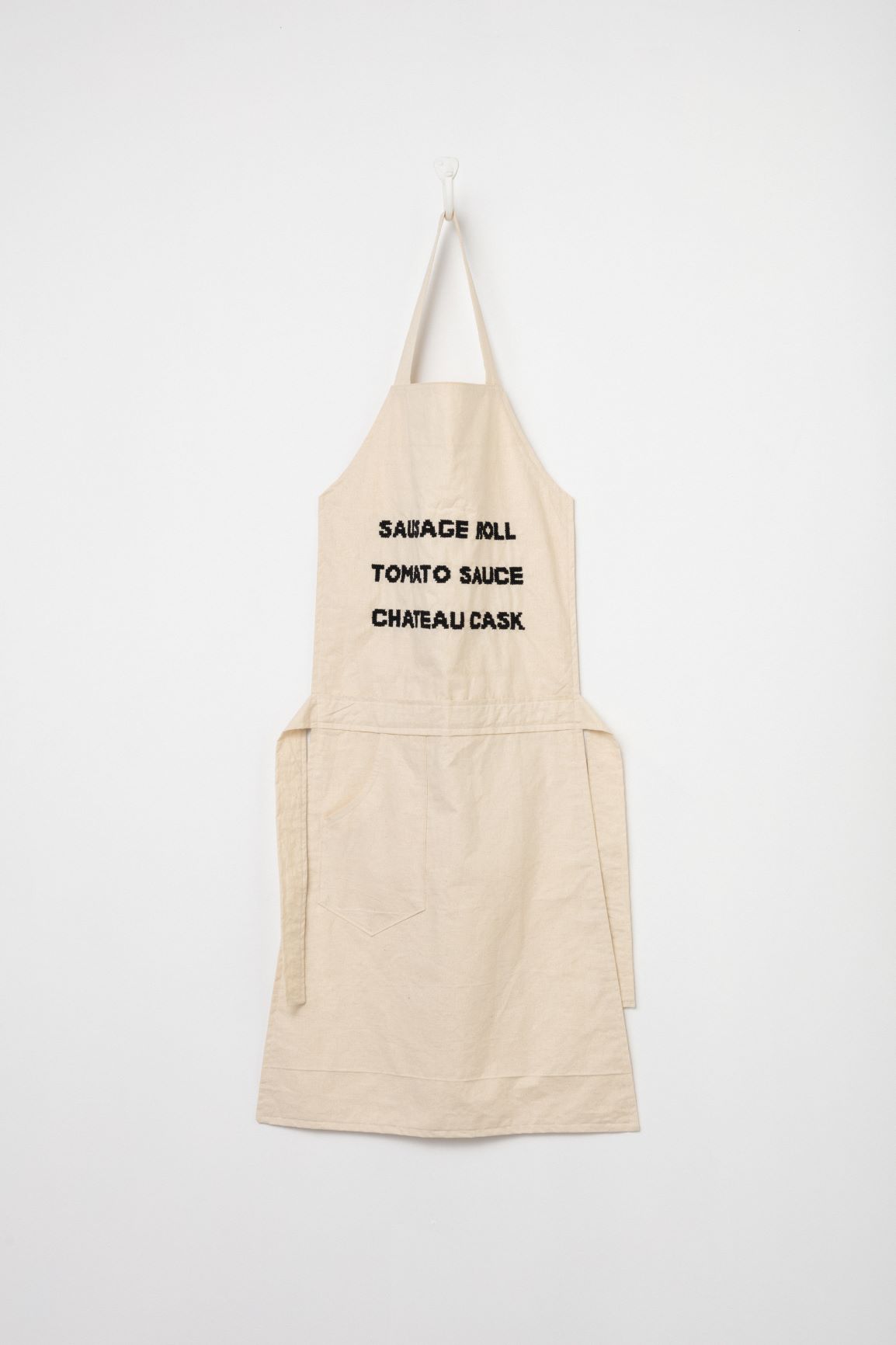
Caz Haswell’s mother was an avid list maker. Interspersing typewritten and handwritten text, the work Mothers Attributes is a list compiled by the two women together around 1998. It displays the artist’s late mother’s knack for language and for picking up the local vernacular during her five years running the General Store in Hill End, New South Wales:
Weather
forecaster / day keeper / procurer of gunmen to shoot half dead dogs /
fuel quality expert / telephone directory / turkey broker / reporter of escaped
horses / rescuer of the injured / post mistress / knitting needle exchange / bank,
no interest charged / social director / counsellor / behaviour supervisor / drinker
of white wine / pause button pusher / talker / …and poet
This brief but vivid collection immediately conjures the general store as a hub of town life, confirming the undoubted fortitude and good humour that would have been necessary in order to wear so many proverbial hats.
Over the years, Haswell herself has been collecting lists of slang terms and idioms as potential titles for artworks. After coming to the realisation that in generating pages and pages of these colloquialisms she had in fact created a work in itself, Haswell gathered them into a new form for the piece Showing not telling (2020). A banner of flannelette sheet hangs by two tabs, its particular pattern of vertical pastel stripes immediately recognisable to anyone who was regularly tucked into bed in a certain era. Running perpendicular to the stripes are a series of cross-stitched phrases:
COOLING THE HEELS / BUTTER ZONE / TRIPLE THREAT / CLAPS AND SNARES / ICE TO MEET YOU / FUR COAT AND NO KNICKERS / STATE OF NATURE / TENDER LOIN / FORCE OF DETONATION / SUNSET CLAUSE / HONEY TRAP / SHARE OF MOUTH / NO FRILLS NO FAT / RIPPLE AND BLUR / SHOWING NOT TELLING
It is a curious combination: the soft, pastel-hued cotton of the flannelette, with its cosy connotations, disarms us before the block letters hit us with their suggestive implications in stitched black pixels. The artist’s great grandfather made tapestries (an art therapy practice of sorts) and after discovering his large works at home, a young Haswell was introduced to the practice by her aunt. Haswell enjoys the slow, laborious process of needlepoint, its automated, repetitive rhythms allowing space for contemplation.
In the work Chateau cardboard (2020), the phrases sausage roll/tomato sauce/chateau cask are stitched onto an apron. The text was originally jotted down by Haswell’s mother as an end-of-day musing about what to have for dinner after a long day cooking for others in the Hill End General Store café, and one can see parallels between the process of stitching the words and the act of jotting them down in the first place. And of course, an apron is an amusing site to memorialise this gourmet combination.
Haswell also hand builds sculptures from clay, a process which, in contrast to the meditative process of needlepoint, requires continued concentration and a forensic attention to detail. Despite this opposing approach, these clay works nonetheless also seduce with the familiarity of their forms, before inverting these expectations. The sculpture Full lambchop is in fact a to-scale rendering of a lamb chop in white clay, the sexual associations of its title and form providing a connecting thread with the text of Showing not telling.
Meat has made its way into the show via a photograph, taken by Haswell at the age of seven, of her mother after arriving home from the pub having won the meat tray that evening. The photograph, Mother and child, is included in Mother tongue, as is a white clay sculpture of the meat tray itself (from which the subject of Full lambchop originated). The use of clay to sculpt meat evokes rich and varied associations, the cold silky malleability of the clay in wet form echoing the cool give of the meat, before transforming into something quite different: a dry, hard finished product denuded of both colour and context.
Throughout Mother tongue, language and materiality are used to explore evocations of the body, particularly through references to food and sex. Like meat, smoking is also loaded with connotations. Holy Smokes (2020), a framed work on paper listing euphemisms related to this now outmoded vice, rests on casts taken of Haswell’s mother’s ashtray. Once a ubiquitous household object, in Holy smokes the ashtray’s functionality has been converted into a literal prop for the text: selling smoke / smoke without fire / big smoke / passive manslaughter / second hand smoke / smoke house. This set of phrases has its own internal rhythm, with a jarring note midway – another composition formed of unexpected evocations.
Fuck you / very much, declares a 2019 work of the same name. The words are cross-stitched into terry towelling, playfully contaminating the idea of the monogrammed towel signifying domestic bliss. Haswell recently relocated to live in the same country region as Hill End, a place which played a formative role in her life as a young woman during the years her mother lived there. While the works in Mother tongue are, in part, a way for Haswell to gather and interweave the threads of her and her mother’s personalities and lives, the show is also an undertaking to establish boundaries in relation to her past, and to the ongoing formation of her own identity.
Chloé Wolifson, July 2020
Caz Haswell’s exhibition Mother Tongue took place at Galerie Pompom, Sydney from 19 August – 13 September 2020. My above catalogue essay was published to accompany the exhibition.